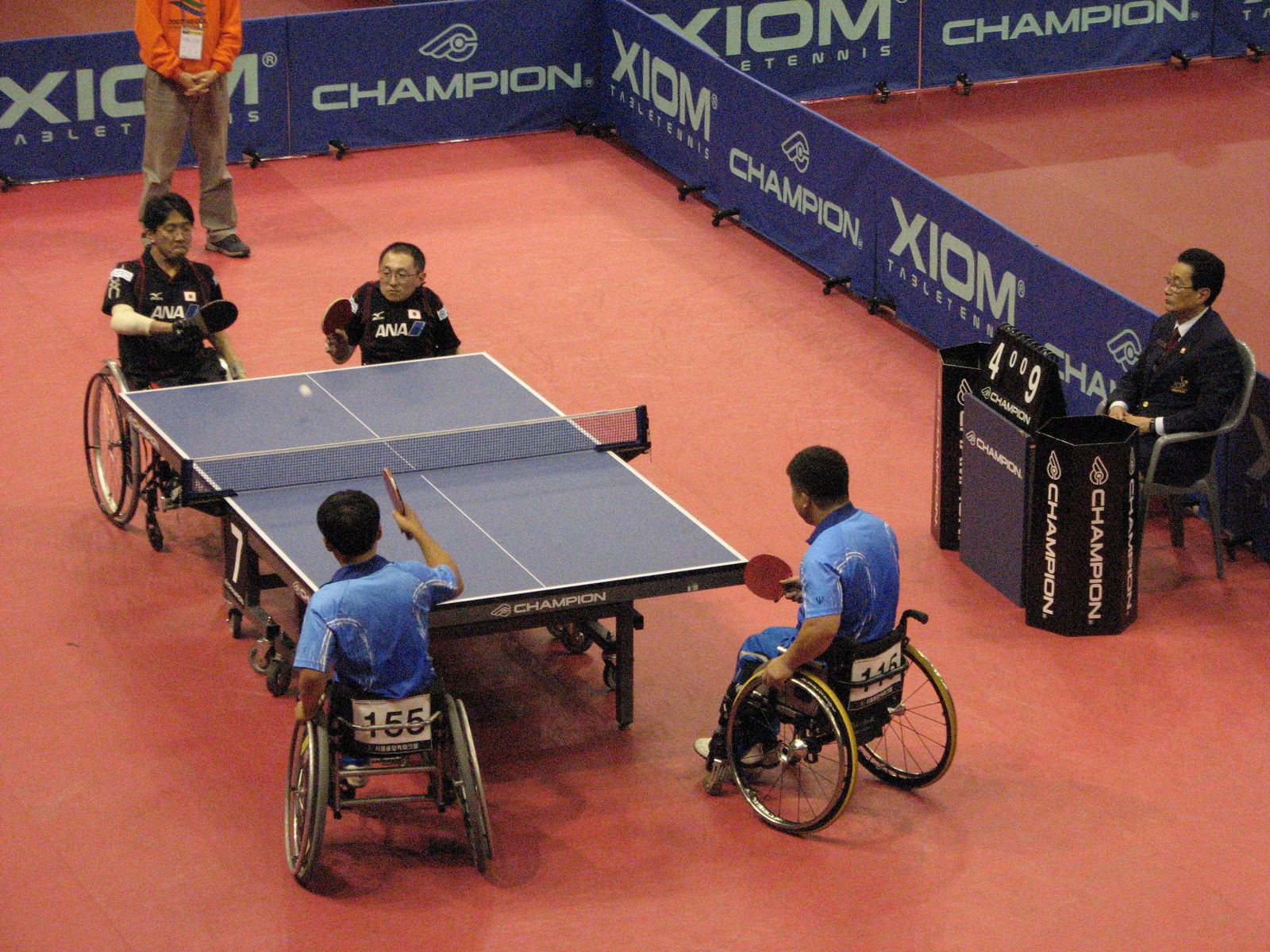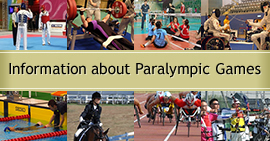Table Tennis
【Competition Venues:Tokyo Metropolitan Gymnasium】
-
Overview
The general rules for Paralympic table tennis are the same as for regular table tennis, but are partially changed according to the type and extent of the players' impairment and functional ability. For example in matches for wheelchair players, the rule is that when the service ball crosses the side line after bouncing on the opponent's side, the service shall be a let (not counted).
2007 Asian & Oceanian Para in Seoul, Korea
In matches between players with intellectual impairment, this sport follows the exact same rules as the able-bodied game. Players compete in individual or team events, which are divided into classes based on the type and extent of the players' impairment and functional ability. (Class 1-5: wheelchair players; class 6-10: players who play standing; Class 11: players with an intellectual impairment).
Players who wish to participate in the Paralympics Games must have a high world ranking. Japanese athletes have achieved excellent performances in international games, earning the right to participate. The speed and power of the games are as great as those between able-bodied players. With great reflexes, players strike the ball, which sometimes travels at speeds of around 100 km/h.The highlight of the game is "tactics and strategy" which take advantage of the opponent's weak points.
History
Table tennis is derived from an after-dinner sport played by English upper-class families in the 1890s. The sport was included in the first Paralympics Games in Rome in 1960.
Detail
Sports Event
Men Women
EventSingles - Class 1
Singles - Class 2
Singles - Class 3
Singles - Class 4
Singles - Class 5
Singles - Class 6
Singles - Class 7
Singles - Class 8
Singles - Class 9
Singles - Class 10
Singles - Class 11
Team - Class 1-2
Team - Class 3
Team - Class 4-5
Team - Class 6-7
Team - Class 8
Team - Class 9-10Singles - Class 1-2
Singles - Class 3
Singles - Class 4
Singles - Class 5
Singles - Class 6
Singles - Class 7
Singles - Class 8
Singles - Class 9
Singles - Class 10
Singles - Class 11
Team - Class 1-3
Team - Class 4-5
Team - Class 6-8
Team - Class 9-10Eligible impairment
- Limb deficiency (wheel chair) (standing position)
- Intellectual impairment
(Updated on April 10, 2019)


